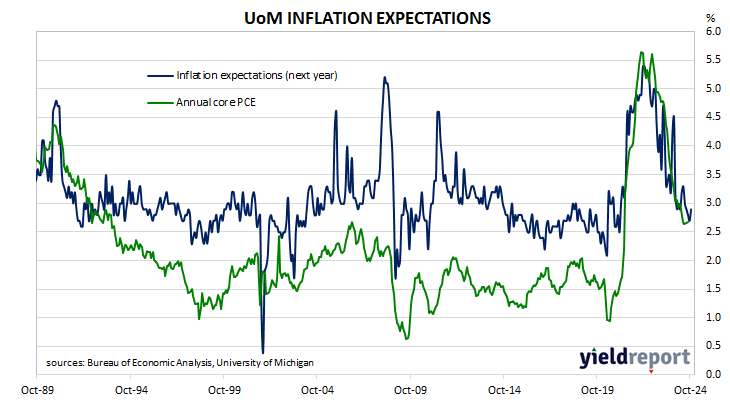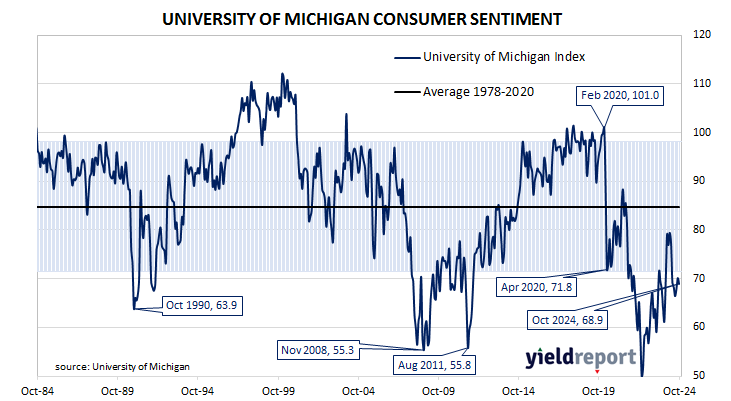Summary: University of Michigan consumer confidence index slips in October, less than expected; views of present conditions, future conditions both deteriorate; consumers’ frustration over high prices continues; longer-term US Treasury yields rise; rate-cut expectations firm slightly; inflation expectations mixed – short-term up, long-term down.
US consumer confidence started 2020 at an elevated level but, after a few months, surveys began to reflect a growing unease with the global spread of COVID-19 and its reach into the US. Household confidence plunged in April 2020 and then recovered in a haphazard fashion, generally fluctuating at below-average levels according to the University of Michigan. The University’s measure of confidence had recovered back to the long-term average by April 2021 but then it plunged again in the September quarter and remained at historically low levels through 2022 and 2023.
The latest survey conducted by the University indicates confidence among US households has deteriorated slightly in October. The preliminary reading of the Index of Consumer Sentiment registered 68.9, a little less than the 70.0 which had been generally expected as well as September’s final figure of 70.1.
Consumers’ views of current conditions and their views of future conditions both deteriorated relative to those held at the time of the September survey. The Current Economic Conditions Index decreased from 63.3 to 62.7 while the Index of Consumer Expectations Index increased from 74.4 to 72.9.
“Sentiment is currently 8% stronger than a year ago and almost 40% above the trough reached in June 2022,” said the University’s Surveys of Consumers Director Joanne Hsu. “While inflation expectations have eased substantially since then, consumers continue to express frustration over high prices.”
Short-term US Treasury bond yields hardly moved while longer-term yields rose moderately on the day. By the close of business, the 2-year Treasury yield had returned to its starting point at 3.96%, the 10-year yield had gained 4bps to 4.10% while the 30-year yield finished 5bps higher at 4.41%.
In terms of US Fed policy, expectations of a lower federal funds rate in the next 12 months firmed a touch, with at least another five 25bp cuts priced in. At the close of business, contracts implied the effective federal funds rate would average 4.655% in November, 18bps less the current rate, 4.51% in December and 4.18% in February. September 2025 contracts implied 3.475%, 136bps less than the current rate.
US consumer inflation expectations increased in the short-term while longer-term expectations eased. Year-ahead expectations increased from 2.7% to 2.9% but long-term expectations slowed from 3.1% to 3.0%.

It was once thought less-confident households are generally inclined to spend less and save more; some decline in household spending could be expected to follow. However, recent research suggests the correlation between household confidence and retail spending is quite weak.


